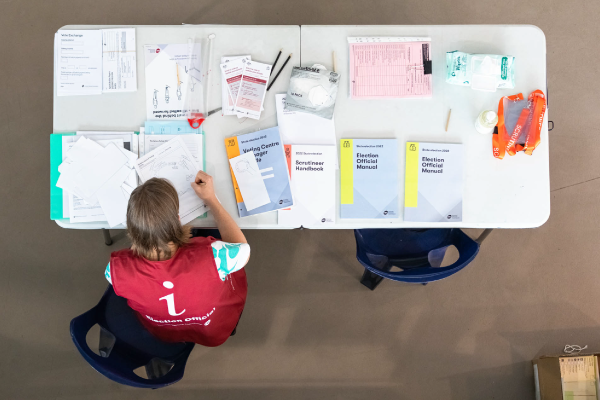Victorian State election 2022

The VEC had great success in enrolling voters before the election, with a record 4,394,465 Victorians enrolled to vote. Partly due to this success, voter turnout declined to 88.03% inclusive of the Narracan District supplementary election. With more people on the roll, turnout as a proportion of enrolled electors decreased.
The VEC communicated key election messages through multi-channel advertising including broadcast TV and radio, organic and paid social media campaigns, print and outdoor advertisements, the VEC website, the VoterAlert reminder system (including the digital EasyVote Guide) and a Public Enquiry Service for electors to call with any questions they had about the election process.
There were 23 registered political parties contesting the election, after the VEC processed a record 18 new applications to register as a political party, of which 9 were approved. Of the 1,194 candidates that contested the election 1,065 were endorsed by a political party and the remaining 129 were independent candidates. The youngest successful candidate was 25 and the oldest was 71.
The VEC produced 57 statewide media releases and responded to 460 media enquiries during the election period.
To deliver the election, the VEC employed a temporary election workforce comprised of over 20,000 roles.
The VEC began counting votes at 6 pm on Saturday 26 November and continued until Wednesday 7 December when the final results for the Legislative Council were published. The VEC counted all postal votes at the Postal Vote Count Centre to allow election offices to focus on their own early votes and to minimise the transport of ballots. This allowed quick publication of first preference counts. Within 4 hours of the close of voting, 92.19% of voting centres had published their results.
The informal voting rate was 5.53%, a slight decline from the 2018 State election. The VEC noticed that blank ballot papers were the most common form of informal voting, making up 17.44% of informal votes. Approximately 56% of informal voters indicated a preference while 41% were intentional informal votes.
The VEC engaged Kantar Public to conduct an evaluation of election services. There was a high level of confidence with the VEC in delivering fair, impartial and high-quality elections with the average rating of 8.6 out of 10, while 31.8% of respondents rated the VEC 10 out of 10.
The VEC tabled its Report to Parliament on the conduct of the 2022 State election in late October. The report contains recommendations for legislative reform derived from lessons learned and feedback received during the election.
| Previous story: Welcome from the Electoral Commissioner | Next story: Electoral structure and boundary reviews |

